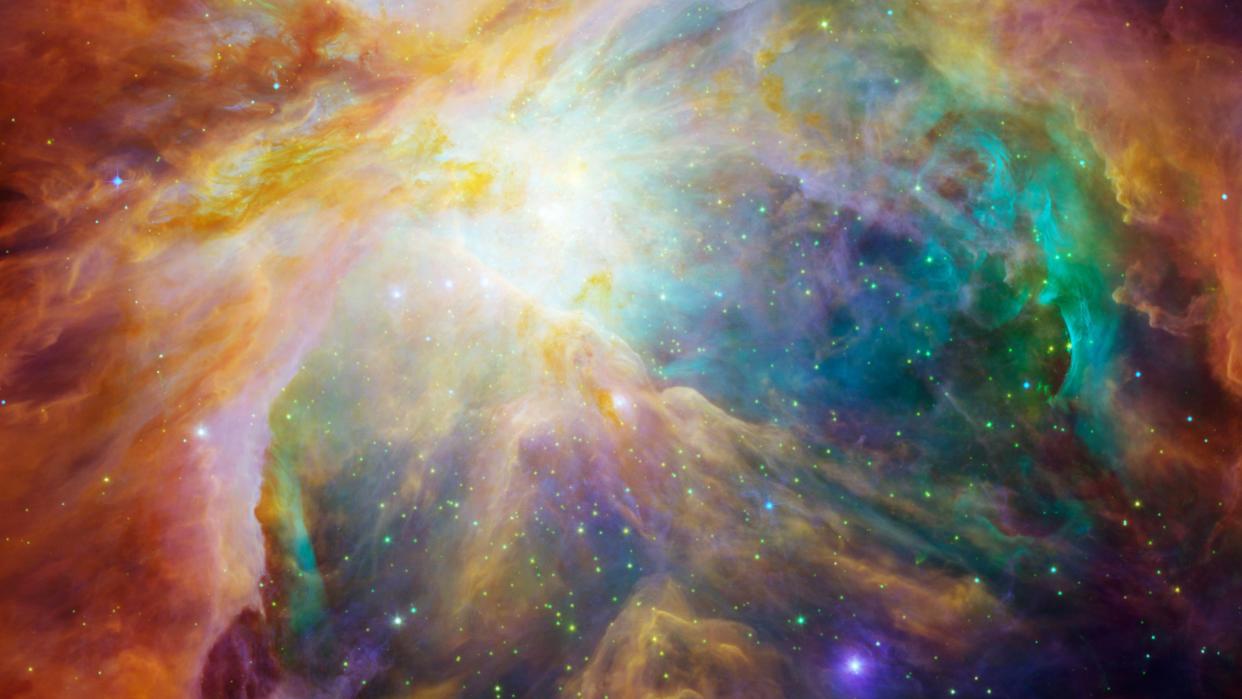James Webb Space Telescope spots dozens of physics-breaking rogue objects floating through space in pairs

The James Webb Space Telescope has discovered dozens of seemingly physics-breaking rogue objects floating through space in pairs, and scientists aren't sure how they can exist.
Freely drifting through the Orion Nebula, the Jupiter-mass binary objects, or "JuMBOs" exist in 42 pairs. Each object orbits its partner at up to 390 times the distance between Earth and the sun.
The JuMBOs are too small to be stars, but as they exist in pairs, they are unlikely to be rogue planets ejected from solar systems. Yet somehow they still formed. The researchers published their findings Oct. 2 on the preprint database arXiv and have not yet been peer-reviewed.
"How pairs of young planets can be ejected simultaneously and remain bound, albeit weakly at relatively wide separations, remains quite unclear," the researchers wrote in the paper. They suggest that "perhaps a new, quite separate formation mechanism," could be responsible for the odd couples' creation.
The rogue pairs are drifting through the Orion Nebula, a star-forming region roughly 1,344 light-years from Earth that features plumes of stormy gas pierced by beams of starlight. Observations from ground-based telescopes had previously alerted the researchers that other mysterious objects were also lurking in the gas cloud. Then, follow-up observations made with the James Webb Space Telescope finally spotted them.
The researchers' analysis revealed the strange objects are gas giants that are roughly a million years old with temperatures around 1,300 degrees Fahrenheit (700 degrees Celsius). Their billowing cloaks primarily consist of carbon monoxide, methane and steam.
Yet what truly baffled the astronomers is that many of the objects came in pairs.
Stars can take tens of millions of years to transform from collapsing clouds of cooling dust and gas to gently glowing protostars, before eventually coalescing into gigantic orbs of fusion-powered plasma like our sun.
RELATED STORIES
—James Webb telescope detects the earliest strand in the 'cosmic web' ever seen
—32 jaw-dropping James Webb Space Telescope images
As a star forms, it spins the gas cloud it's feeding on, weaving a disk of sprinkled leftovers from which planets can form. Sometimes this disk can prematurely split, seeding a glob of material that births a second star beside the first to create a binary system.
The theoretical lower limit for an object to form from star-like cloud-collapse is roughly three Jupiter masses — anything smaller should be born tethered to a star. This makes the existence of these pairs (which each have masses close to one Jupiter) hard to explain. They are possibly ejected planets, but how their binary relationship survived being spat out from their solar system is unclear. Alternatively, they could be a new category of failed stars, but how they became so small is a mystery.
"The ensemble of planetary mass objects and JuMBOs that we see in the Trapezium Cluster might arise from a mix of both of these 'classical' scenarios, even if both have significant caveats," the researchers wrote. "Or perhaps a new, quite separate formation mechanism, such as a fragmentation of a star-less disk, is required."

